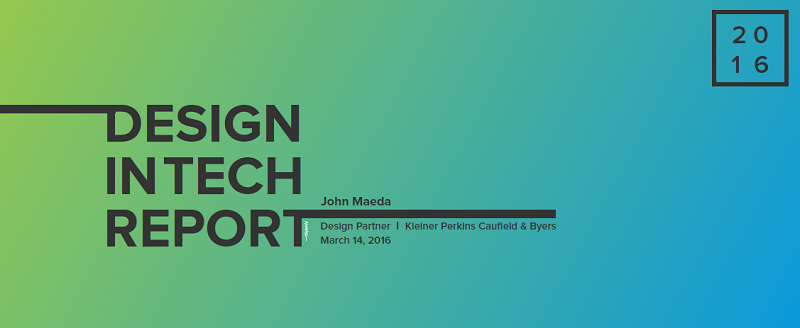If you are having trouble finding tech-savvy design professionals to help your business serve clients who want more than print communications, there’s a good reason. A new wave of opportunities for designers is coming from technology companies, start-ups funded by venture capitalists, and professional services companies.
Since 2013, companies such as Google, Facebook, AirBnb, IBM, Deloitte, Ernst & Young, Accenture, PWC, and Shopify have been acquiring digital design firms with expertise in fields such as user experience, app development, creative technology, industrial design, and video storytelling.
Instead of hiring graphic designers and other design professionals to aid in short-term, campaign-related projects, these big technology and professional services companies want design teams that can assist in planning and developing new products and digital experiences for their customers.
Design in Tech
In his 2016 “Design in Tech” presentation, John Maeda, design partner of the venture capital firm KPCB, attributes the recent wave of acquisitions to the growing importance of customer experience as a competitive advantage.
He cites a Temkin Group study that shows that if people have a positive emotional experience with a company, they are 6 times more likely to buy from that company, 12 times more likely to recommend that company, and 5 times more likely to forgive a mistake.
 Maeda believes a new type of design is emerging that will require designers with skills that are radically different from classic design disciplines such as a graphic communications, fashion design, architecture, interior design, and landscape design.
Maeda believes a new type of design is emerging that will require designers with skills that are radically different from classic design disciplines such as a graphic communications, fashion design, architecture, interior design, and landscape design.
When designing for digital experiences, he says, “Design isn’t just about beauty. It’s about market relevance and meaningful results.”
Instead of spending weeks or months to create a “perfect” design for traditional distribution channels, designers of digital experiences can have their work instantly delivered to hundreds of millions of users. The design will never be “final,” but continuously evolving through continuous testing and data analysis.
Because classic design and design thinking are not the same as computational design, Maeda believes “The general word – ‘design’ – will come to mean less as we will start to qualify the specific type of design we mean.”
Computational designers will be business-savvy professionals who know how to use research and data analytics in their designs. In addition to coding and testing skills, computational designers will need to be able to design systems and cultures.
Design Education is Lagging
Maeda predicts “The large influx of designers into top services companies through mergers and acquisitions activity will reboot the design industry,” predicts Maeda. “We will see more designers becoming investing partners at VC firms, and eventually starting their own funds.” He said many designers in tech are active angel investors.
Because this new field of design is still evolving, it has been difficult to traditional design schools to adapt their programs. Maeda notes that, “Currently design education lags behind the technology industry’s needs for data-oriented, coding-enabled graduates with business acumen. Many resources are available on the internet to supplement formal education in design. Becoming a skilled self-learner is a critical skill for a new designer.”
